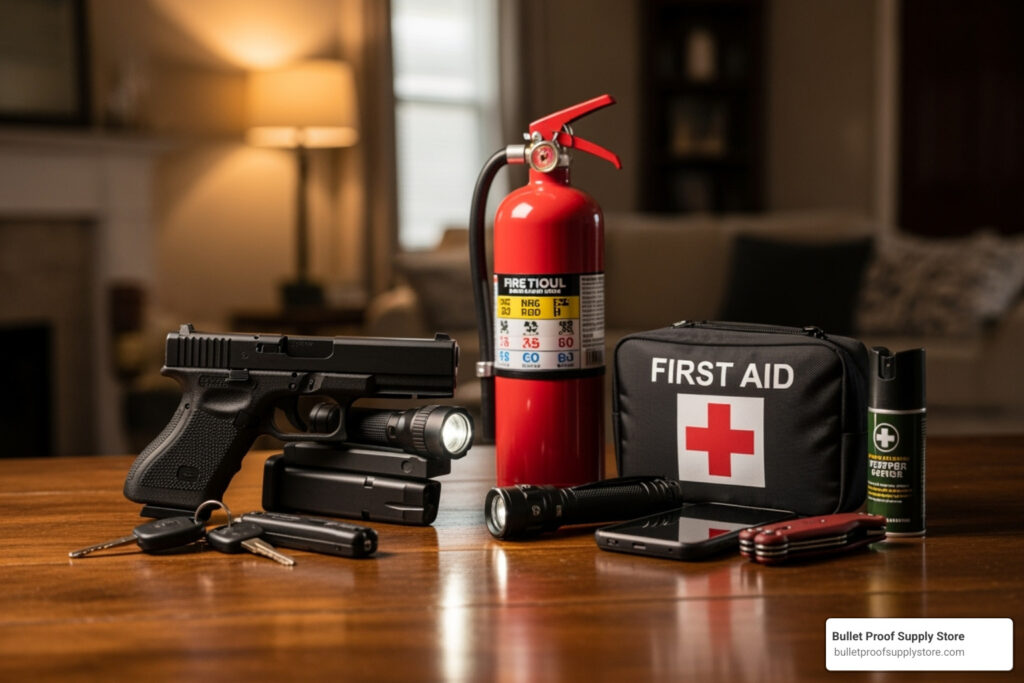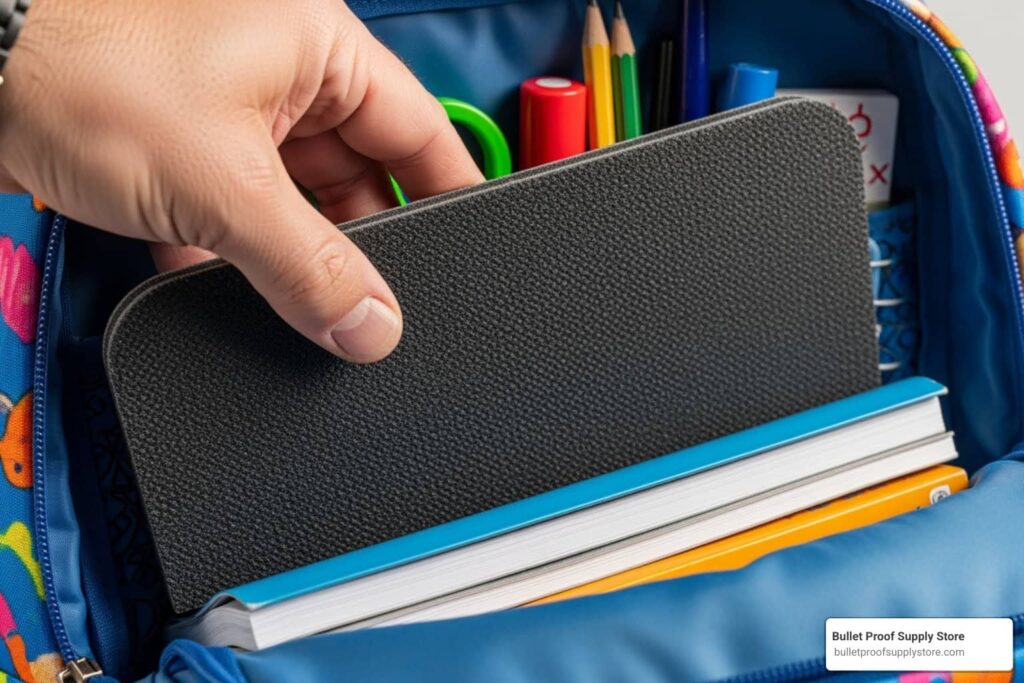Understanding the Highest Level of Ballistic Protection
Quick Answer
- Highest NIJ Level: IV (called RF3 under the 0101.07 draft)
- Stops: .30-06 M2 AP at 2,880 ft/s
- Armor Form: Rigid ceramic/composite plates only
- Weight: About 5-10 lb per plate
- Typical Users: Military, SWAT, civilians facing rifle threats
Many people hear “bullet-proof” and think one vest blocks everything. Reality is layered: handgun threats, standard rifle ball, and finally armor-piercing rounds each demand different solutions. In 2021 Americans spent $2.3 billion on body armor, yet most buyers still ask one core question: what is the highest level of body armor and do I really need it?
After 15 years evaluating gear for military contractors and police agencies, I’ve learned that Level IV saves lives when the threat justifies its weight, bulk, and cost. The rest of this guide shows where Level IV excels, where it doesn’t, and how to choose protection that you’ll actually keep on.
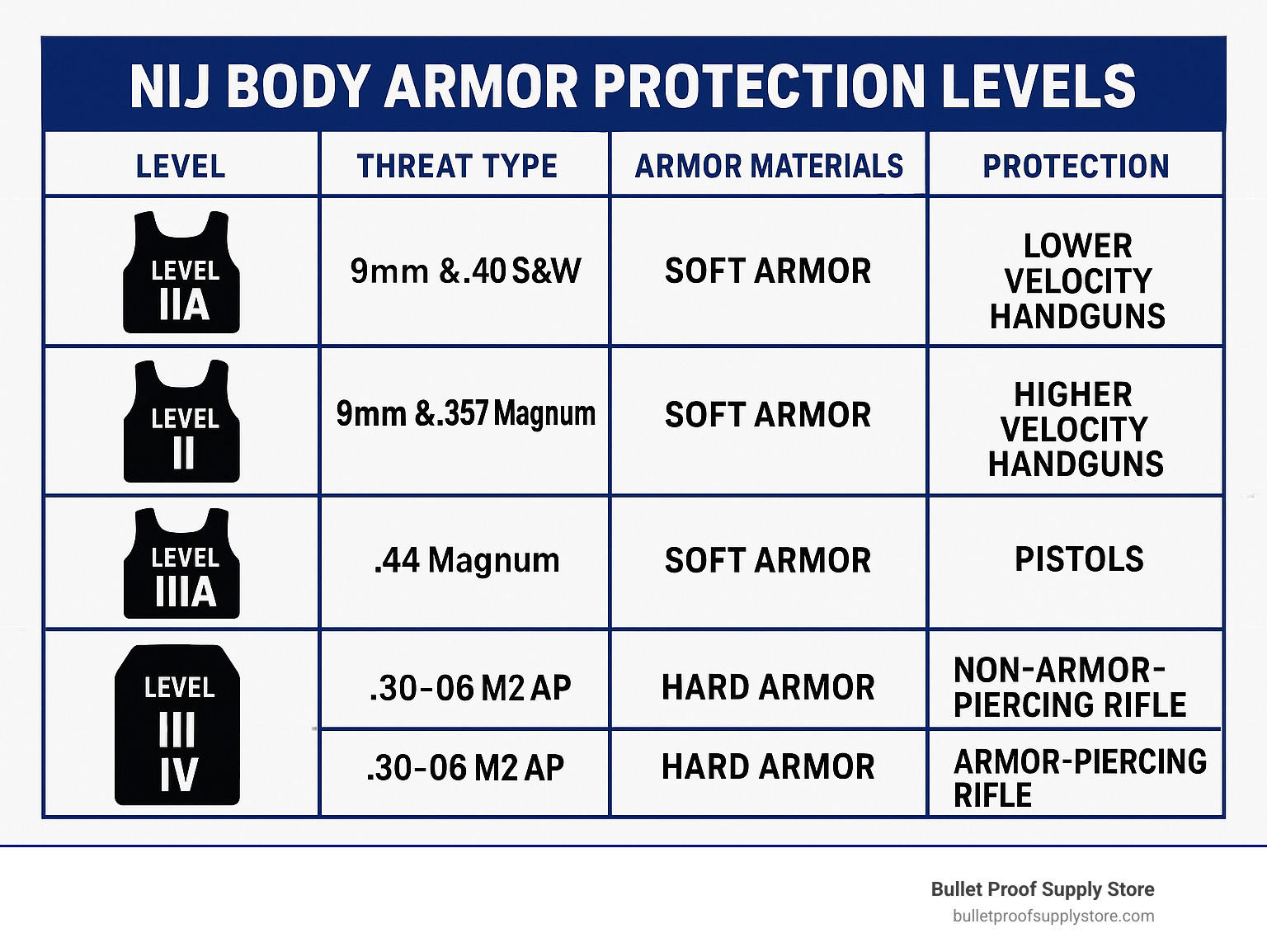
NIJ Level IV: Answering “What Is the Highest Level of Body Armor?”
Under NIJ Standard 0101.06 (and the upcoming 0101.07), Level IV—aka RF3—is the only rating built to defeat armor-piercing rifle rounds.
Key points:
- Hard plates only. No soft vest can reach Level IV.
- Single-shot test. One hit of .30-06 M2 AP at 2,880 ft/s from 15 m must be stopped with less than 44 mm backface deformation. Some makers add multi-hit capability, but it is not required by NIJ.
- Typical deployment. SWAT and military teams insert the plates when an operation is expected to involve rifles; beat cops and most civilians usually choose lighter levels.
What Do The NIJ Body Armor Levels Mean?
The Science Behind Level IV
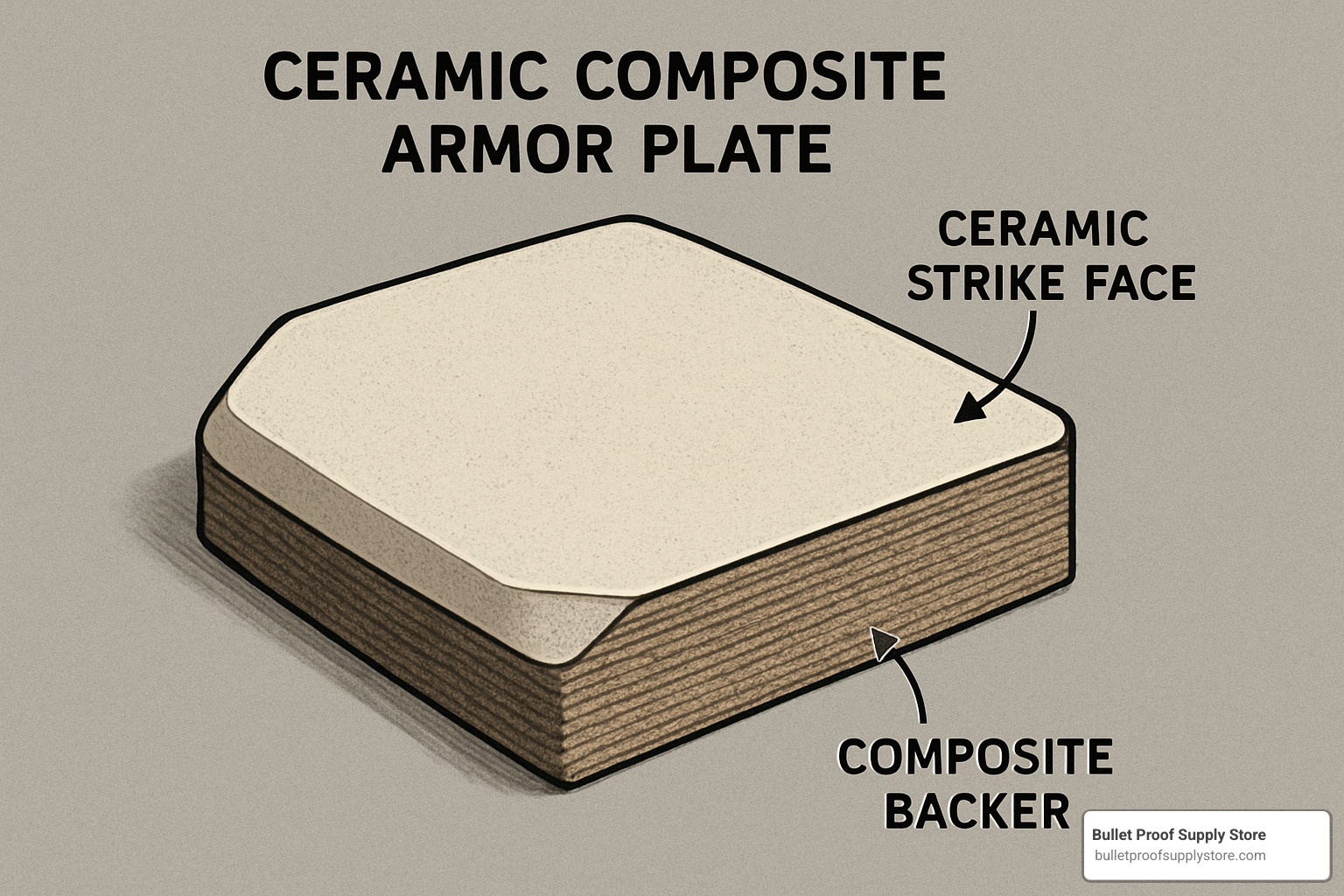
A Level IV plate marries an ultra-hard boron or silicon carbide strike face to a tough UHMWPE or aramid backer. The ceramic cracks and erodes the penetrator; the fibers catch fragments and spread the remaining energy. Manufacturing quality—bonding, tile layout, edge wrapping—determines whether that neat physics holds together in real use.
For a deeper dive into testing, see Understanding Bulletproof Vest Testing: NIJ Standards Decoded.
How Level IV Compares to Other Protection Levels
Moving from Level IIIA to III and finally IV adds huge gains in stopping power—but also in weight, rigidity, and price.
| Feature | Level IIIA | Level III | Level IV |
|---|---|---|---|
| Threat Type | Handgun | Rifle (ball) | Armor-piercing rifle |
| Representative Round | .44 Magnum | 7.62×51 mm M80 | .30-06 M2 AP |
| Armor Form | Soft flex panels | Hard plates | Hard plates |
| Weight | 4-6 lb whole vest | 6-8 lb per plate | 5-10 lb per plate |
| Common Use | Patrol, concealed carry | Infantry, patrol rifle response | High-risk tactical |
Physical Limitations of Level IV
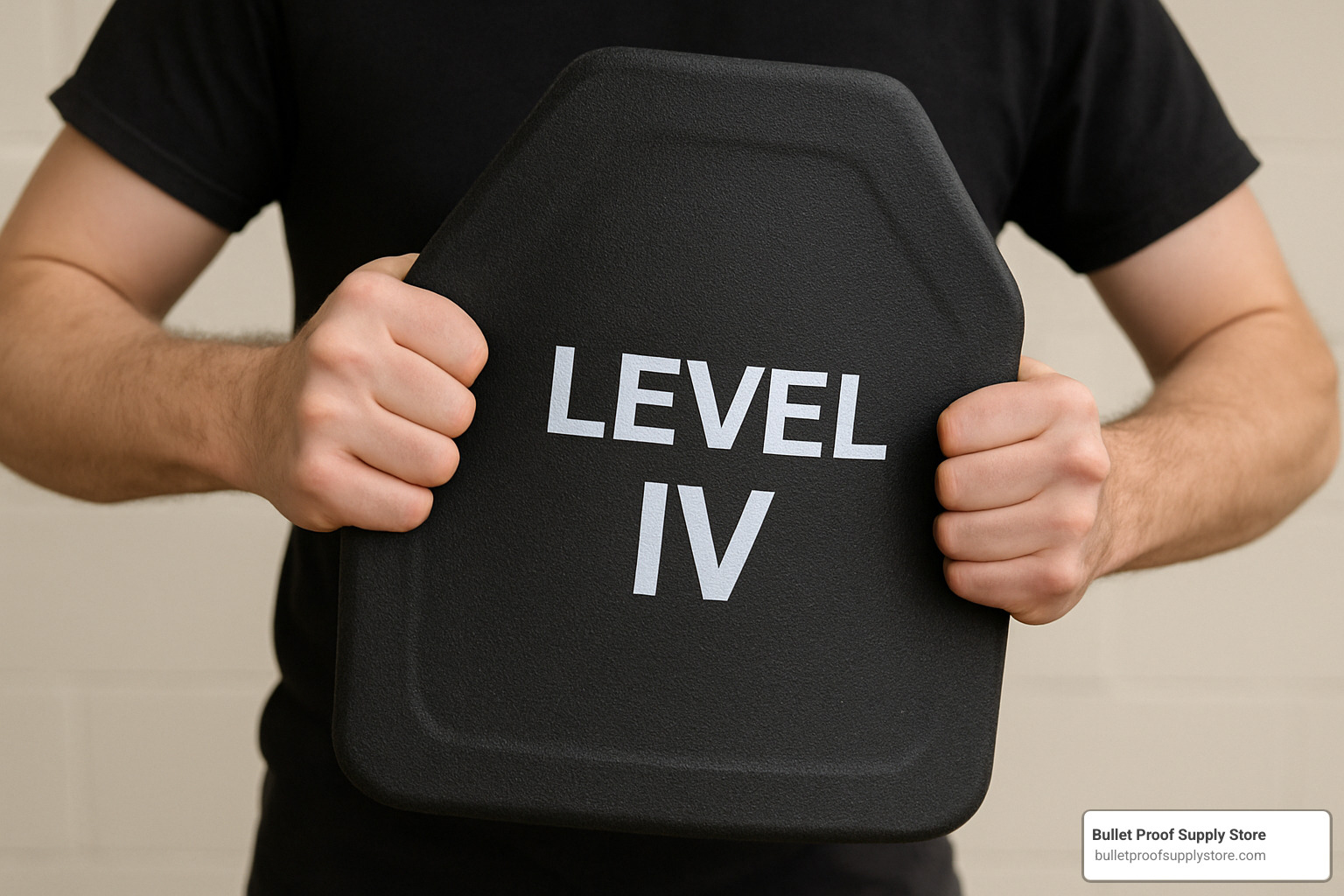
- 20 lb of plates plus carrier = rapid fatigue.
- Rigid profile restricts bending, climbing, and vehicle egress.
- A successful stop may still drive 30-40 mm into your torso—hence the value of trauma pads.
- Ceramic cracks after impact; replace plates if hit.
- Heat retention is real. Hydrate and train with the gear you plan to wear.
This Lightweight Ballistic Plate trims ounces without sacrificing NIJ IV rating, helping mitigate these drawbacks.
Beyond the NIJ: Other High-Level Standards
NIJ Level IV is the highest civilian benchmark in the U.S., yet several military or regional specs push performance even further.
- “Level III+.” A marketing term, not an NIJ rating, usually meaning a plate stops M855 and M193—two rounds that chew through many Level III plates. Always read the test data. Example: this NIJ III AR-15 and AK-47 Bulletproof Armor.
- ESAPI. U.S. military plates must survive multiple hits of 7.62×54 mmR and M995 5.56 AP—roughly “Level IV multi-hit.”
- VPAM PM 14 (EU) & GOST BR6 (RU). Address heavy machine-gun or anti-materiel rifle rounds well beyond street threats.
Understanding the test method—round, velocity, distance—is more important than memorizing letter codes. The NIJ docs remain the easiest baseline: Ballistic Resistance of Body Armor – NIJ 0101.06.
Ballistic, Stab, and Spike: Different Problems, Different Solutions
A Level IV plate that laughs at .30-06 AP can still be pierced by an ice pick. That’s because bullets rely on velocity; knives rely on concentrated pressure.
- Ballistic armor spreads kinetic energy through fibers or ceramics.
- Stab armor uses chainmail or tight weaves to resist cutting and thrusting.
- Spike armor adds laminates to stop narrow points that slip through chain links.
A single vest can combine all three protections, but every added layer equals more weight and less breathability. NIJ Standard 0115.00 sets stab/spike levels in joules, separate from bullet ratings. Identify your real threat—handgun, rifle, edged weapons—before selecting gear.
Frequently Asked Questions
What is the highest level a civilian can own?
Federally, civilians may buy NIJ Level IV as long as they are not convicted felons (18 U.S.C. § 931). A few states restrict sales, so confirm local law.
Is there a Level V?
No official NIJ Level V exists. Some plates exceed Level IV in private testing, but they carry terms like “IV+” until NIJ updates its scale.
Do Level IV plates expire?
Most warranties run 5–10 years. Store plates cool, dry, and out of sunlight; inspect for cracks or delamination. Replace any plate that has taken a hit or shows damage.
Conclusion: Match Protection to the Mission
Level IV gives the maximum NIJ-rated defense, yet its weight, cost, and bulk make it overkill for many everyday roles. A comfortable Level IIIA vest you wear daily beats a Level IV setup left in the closet.
Bullet Proof Supply Store sources directly from manufacturers so you can choose—from affordable, concealable IIIA to full NIJ IV—without emptying your wallet. Explore our body armor packages and gear up with confidence.

